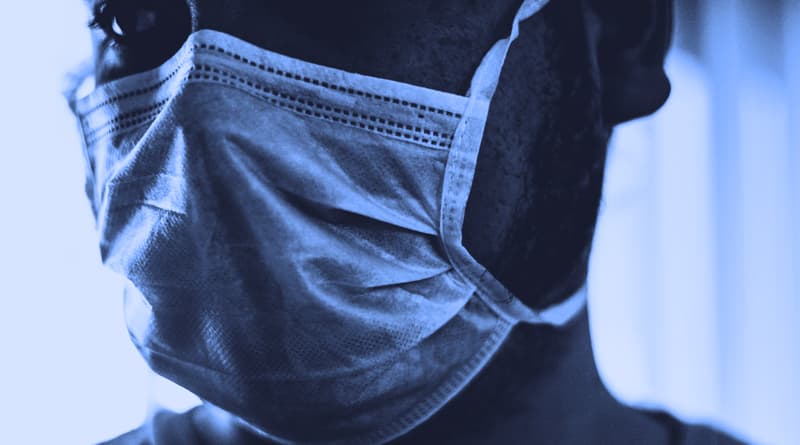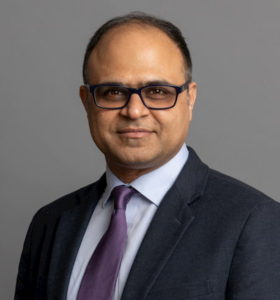
The Impact of COVID-19 on Populations with Special Needs
By Padmini Murthy M.D., M.P.H., FAWA, FRSPH and Vikas Grover Ph.D., CCC-SLP
Mitigating the impact of Coronavirus COVID-19 on the neurodivergent
Even in the best of times, as members of a global community, the cross section of the population living with disabilities is often marginalized. During the present pandemic, these already marginalized individuals face additional barriers to health—leaving them at a higher risk for contracting COVID-19. Some face reduced access to health care services, basic hygiene measures and sanitation. Hand washing may be challenging due to lack of running water, soap, sinks, inaccessibility of water pumps due to physical deformity. Persons with special needs may face difficulty in social distancing due to inability to distance themselves from their attendants or caregivers. In addition, depending on their underlying or pre-existing physical conditions, people with special needs are at a greater risk of developing more severe cases of COVID-19 if they are infected.
In response to this heightened risk, the World Health Organization (WHO) issued guidelines to continue integrating people with disabilities into the mainstream of society while minimize their risk to contracting COVID-19. These included ensuring that caregivers use the necessary personal protective equipment (PPE) when attending to their needs, disinfecting any aids used and ensuring access to essential items including cleaning supplies.
Parents of children with special needs should encourage their children to continue playing, reading, learning, and connecting with friends using telephone calls, texts or social media. Local, state and federal governments should include captioning and sign language for all live and recorded events and communications from the government, ensuring that important current information is conveyed to those with hearing impairments. Reading materials should be produced using simple language and easy to read formats to ensure information accessible to people with cognitive impairment or those with reading impairment due to intellectual disabilities. It is crucial to include messages, images and graphics which are inclusive and do not stigmatize any section of the population.
Forging partnerships between stakeholders including advocacy bodies, NGOs, government agencies, law and order and public health agencies becomes crucial to effectively disseminate public health information and provide the necessary support needed. It is vital that the needs of people with various types of disability—especially those with mental disabilities—are considered in readiness and response operations for the COVID-19 outbreak.
The concept of need is, at times, a matter of perspective. A caregiver of a person with a mental health challenge might perceive needs to be different than a clinician who sees the patient once or twice a week. During a stressful time, such as COVID-19, it is vital to assess the needs from various perspectives to serve people with mental and physical disabilities adequately. For example, it is crucial that caregivers and family members provide a supportive environment, take precautions and put in place preventive measures which address the special needs.
Special attention to those living in humanitarian settings, including those living in situations of forced displacement as a result of armed conflict in refugee or migrant camps, informal settlements, urban slums, mental health facilities and prisons is of paramount importance to contain outbreaks which have the tendency to become wide spread.
Professional bodies and practitioners need to take specific measures to ensure that children with special needs and mental disabilities receive the services they require. It is not the quantity of services that work alone; the qualitative part is the most critical of therapeutic management.
Providing effective therapy for children with special needs during COVID-19
How can children with special needs get the desired services that are quantitatively and qualitatively adequate? The most viable answer at this point has been the use of teletherapy. However, there are crucial aspects that professionals need to address while using teletherapy. The 60-minute session is different when delivered face-to-face versus via teletherapy. The professional who usually plays the role of the service provider is now responsible for providing directions from a distance. The child, who sees his family members as family, is now expected to engage with them in various therapy techniques multiple times a day—keeping the child attentive while managing in home distractions or resistance from the client who is used to working with professionals.
It is a strain for parents and caregivers to alter their methods to facilitate an improvement in the client’s condition rather than just maintaining their current condition. Requesting parents and caregivers to make changes and accommodations for treatment during a world crisis adds a new dimension to telehealth. Being involved in a session with a clinician physically present is different than being a caretaker facing the mental, physical, emotional, communication, or behavioral challenges all by themselves and 24/7.
Tips for Parents Involved in Therapy Sessions in the Time of COVID-19
The positive side of the story is that this situation allows family members to spend more time with the child. If a parent is involved in multiple teletherapy sessions in a day, the parent experiences the challenges and intricacies of therapy techniques thoroughly. However, to ensure that children are receiving services appropriately, the following steps are recommended:
1) effective communication with family members
2) effective communication among professionals
3) adding a special session per week for parent training
4) providing optional emotional support services during difficult times (social worker, counselor, or psychologists)
5) reducing the amount of documentation for parents
6) providing sample videos and other resources
7) helping families establish routines
8) showing empathy
9) consistently provide positive reinforcement and appreciation.
While many states are attempting to provide the mandated services, the question of how to maintain the quality of services needs to be addressed immediately, so that the stakeholders working with populations with special needs and mental disabilities ascertain that the human rights protection mechanisms are not violated.
About the authors:
 Padmini Murthy M.D., M.P.H., FAWA, FRSPH is currently Professor and Global Health Director at New York Medical College School of Health Sciences and Practice. An internationally recognized leader in women’s health, Recipient of Elizabeth Blackwell medal, Global Health lead American Medical Women’s Association the First Vice President of The Global NGO Committee and NGO Representative of Medical Women’s International Association to the UN and MWIA focal point to World Health Organization . A widely published author, she has made over 150 presentations to international audiences and has hosted a talk show on Millennium Development Goals on AV Blog Talk radio.
Padmini Murthy M.D., M.P.H., FAWA, FRSPH is currently Professor and Global Health Director at New York Medical College School of Health Sciences and Practice. An internationally recognized leader in women’s health, Recipient of Elizabeth Blackwell medal, Global Health lead American Medical Women’s Association the First Vice President of The Global NGO Committee and NGO Representative of Medical Women’s International Association to the UN and MWIA focal point to World Health Organization . A widely published author, she has made over 150 presentations to international audiences and has hosted a talk show on Millennium Development Goals on AV Blog Talk radio.
 Vikas Grover Ph.D., CCC-SLP is an Assistant Professor in the Department of Speech-Language Pathology, New York Medical College, Valhalla, New York. Dr. Grover completed his Ph.D. in Speech-Language-Hearing Sciences from The Graduate Center, City University of New York and is a licensed speech-language pathologist in New York. He is a certified member of the American Speech-Language-Hearing Association (ASHA, CCC-SLP) and has experience working with multicultural linguistically diverse populations. His educational background also includes a post-graduate diploma in Counseling and Guidance. He has worked with children in Early Intervention in New York City, providing services to 0-3-year-old children with speech-language delays, autism spectrum disorder (ASD), and feeding and swallowing issues. His special focus is on training multicultural and multilingual parents in Early Intervention. His research areas are speech production and speech perception in non-native speakers of English.
Vikas Grover Ph.D., CCC-SLP is an Assistant Professor in the Department of Speech-Language Pathology, New York Medical College, Valhalla, New York. Dr. Grover completed his Ph.D. in Speech-Language-Hearing Sciences from The Graduate Center, City University of New York and is a licensed speech-language pathologist in New York. He is a certified member of the American Speech-Language-Hearing Association (ASHA, CCC-SLP) and has experience working with multicultural linguistically diverse populations. His educational background also includes a post-graduate diploma in Counseling and Guidance. He has worked with children in Early Intervention in New York City, providing services to 0-3-year-old children with speech-language delays, autism spectrum disorder (ASD), and feeding and swallowing issues. His special focus is on training multicultural and multilingual parents in Early Intervention. His research areas are speech production and speech perception in non-native speakers of English.




